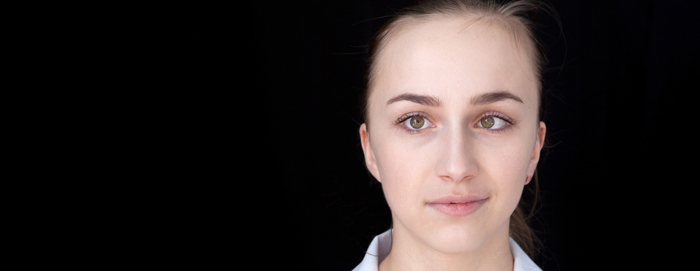Cross Eye Treatment Treatment & Diagnostics in Tardeo, Mumbai
Cross Eye Treatment
Cross eye, also known as strabismus, wall eyes or squint, is a vision problem commonly seen in childhood. In this condition, both the eyes are unable to focus at the same time on a particular object. Permanent vision problems can occur without treatment.

What do we need to know about cross eye?
Cross eye occurs at any age but is mostly seen in infants and young children. It can affect their self-esteem, appearance and ability to see. You will have to provide them support and prompt treatment.
Normally, eye movement and coordination are controlled by six muscles of the eyes. Patients with cross eye will have difficulty in controlling eye movement and maintaining normal eye alignment.
To seek treatment, you can search for ophthalmology doctors near me or ophthalmology hospitals near me.
What are the symptoms of cross eye?
Some of the signs and symptoms are as follows:
- Headache or eye strain
- Eyes may look misaligned
- Blurred vision
- The eyes may not move in a coordinated manner
- Blinking or squinting frequently, especially when exposed to bright sunlight
- Having double vision
- Leaning towards the object to see it
- Inaccurate depth perception (judging the distance between you and an object)
What causes cross eye?
Cross eye can occur due to complications in the muscles of the eyes, difficulty in nerves transmitting information to the eye muscles or problems within the area of the brain that directs and controls eye movement. Other causes can be due to eye injuries or overall health conditions.
When should you consult a doctor?
It is vital to seek treatment at the earliest.
You can request an appointment at Apollo Spectra Hospitals, Tardeo, Mumbai.
Call 1860 500 2244 to book an appointment.
How is cross eye diagnosed?
Your ophthalmologist will perform the following tests.
- Patient History: Your ophthalmologist will take your history regarding general health problems, family history, medications or environmental factors that may be contributory to your symptoms.
- Visual Acuity: Your ophthalmologist will check the extent of vision loss via the visual acuity test.
- Alignment and focusing testing: Assessment of how well your eye focuses, moves and works together needs to be done.
- Refraction: The suitable lens power required to recompense your refractive errors (nearsightedness, farsightedness or astigmatism) and identify how well they can focus light is determined by this test.
- Eye health examination: Other diseases which may contribute to the cross eye may have to be ruled out.
How is cross eye treated?
Cross eye can be treated by the following methods:
- Eyeglasses or contact lenses: Used to correct eye alignment and focus, glasses or lenses can help reduce the effort of the eyes and help in focusing.
- Prism lenses: To reduce the effort of the eye while turning to see objects, special lenses called prism lenses which bend light before they enter the eyes can be used.
- Orthoptics (eye exercises): Exercises can help in strengthening the eye muscles.
- Medications: Certain eye drops or ointments may be used concurrently with surgery.
- Patching: To improve control of eye misalignment, patching can help treat amblyopia (lazy eye).
- Eye muscle surgery: Surgery can help align the eyes correctly by altering the muscles of eyes.
Conclusion
Cross eye is a condition that can be treated. With prompt treatment, vision and depth perception can be improved and you can be protected against vision loss.
Family history, refractive errors like hyperopia (farsightedness) or certain medical conditions like cerebral palsy, Down’s syndrome, diabetes, head injury or stroke.
Amblyopia or lazy eye (decreased vision in one eye), blurry vision, eye strain, low self-esteem due to the appearance of the eyes and poor 3-D vision.
No. Non-surgical treatment options like glasses, lenses, prism lenses and vision therapy can help in vision improvement and eye alignment.
Our Doctors
DR. ASTHA JAIN
MBBS, MS...
| Experience | : | 4 Yeras Experience |
|---|---|---|
| Speciality | : | Ophthalmology... | Location | : | Chembur |
| Timings | : | Mon - Fri : 5:00 PM ... |
DR. NEETA SHARMA
MBBS, DO (Ophthal), ...
| Experience | : | 31 Yeras Experience |
|---|---|---|
| Speciality | : | Ophthalmology... | Location | : | Chembur |
| Timings | : | Thur, Fri : 10:00 AM... |
DR. PALLAVI BIPTE
MBBS, MS (Ophthalmol...
| Experience | : | 21 Yeras Experience |
|---|---|---|
| Speciality | : | Ophthalmology... | Location | : | Chembur |
| Timings | : | Mon - Wed, Fri & Sat... |
DR. PARTHO BAKSHI
MBBS, DOMS, DNB (Oph...
| Experience | : | 19 Yeras Experience |
|---|---|---|
| Speciality | : | Ophthalmology... | Location | : | Chembur |
| Timings | : | Mon - Fri : 11:00 AM... |
DR. NUSRAT BUKHARI
MBBS, DOMS, Fellowsh...
| Experience | : | 12 Yeras Experience |
|---|---|---|
| Speciality | : | Ophthalmology... | Location | : | Tardeo |
| Timings | : | Mon - Fri : 9:00 AM ... |
Our Top Specialities
NOTICE BOARD
CONTACT US
CONTACT US
 Book Appointment
Book Appointment







.svg)
.svg)
.svg)
.svg)








